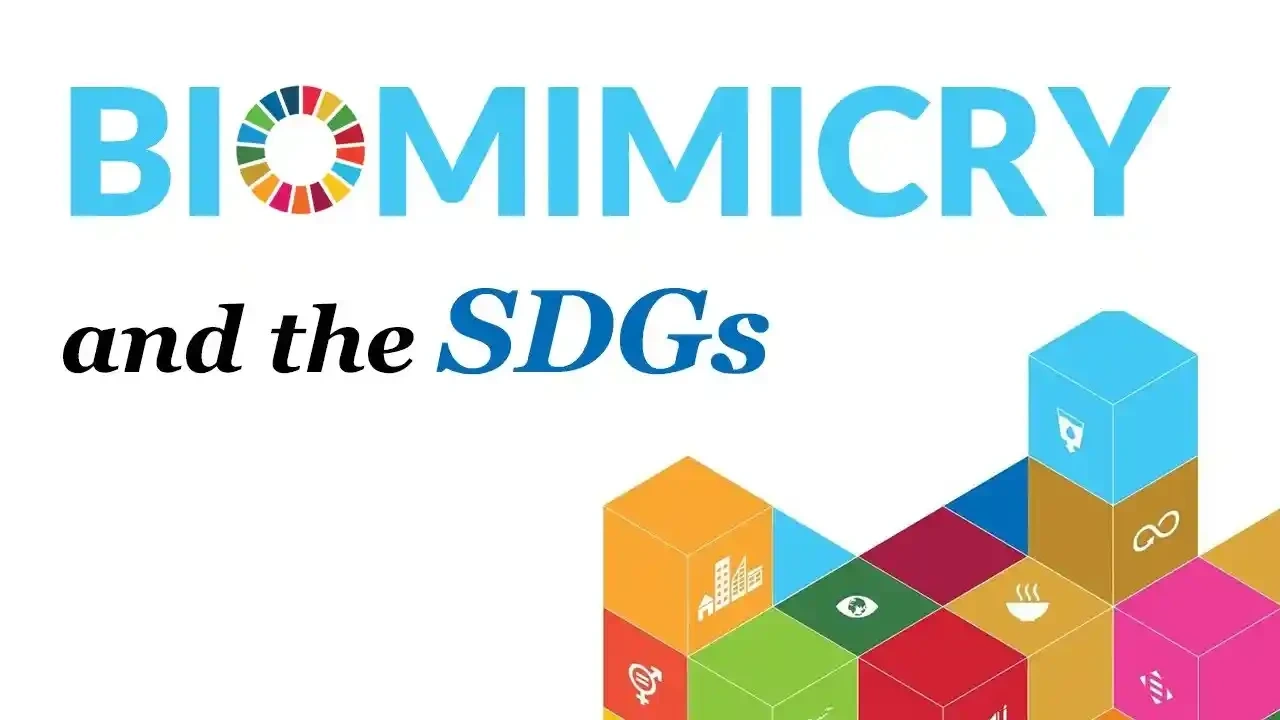The Biomimicry Revolution: Turning to Nature's Secrets to Meet the SDGs

When you think of sustainability, what comes to mind? Perhaps it’s electric cars, the solarpunk movement, or regenerative agriculture. Personally, I imagine a forest. For what is more sustainable than a thriving ecosystem that gives more than it receives, produces no waste, cleans our air and filters our water.
Now, what if our cities, our designs and our services did the same? That’s essentially biomimicry. Learning from nature's secrets, biomimicry is a practice that can assist humanity in solving our global challenges.
In this article, we explore the concept of biomimicry, the role of biomimicry in meeting our sustainable development goals (SDGs), and the reason why combining biomimicry and the SDGs is a viable way toward sustainability.
What is biomimicry?
Biomimicry is a practice that studies nature's models and principles and then mimics these natural systems and organisms to address human challenges. For example, spider silk has inspired the creation of a super-strong material for aeroplane wings. Biomimicry is a new way of looking at our world and exploring how nature's principles can be applied to our inventions. It helps us discover new ideas and uncovers solutions beyond today's technology. Biomimicry touches a wide range of industries including architecture, agriculture, engineering, medicine, transportation, ecosystem management and development, and many (many) more.
How does biomimicry apply to Sustainable Development Goals?
The 17 Sustainable Development Goals (SDGs) today stand as the world’s best plan to build a better world for people and our planet by 2030. Ending poverty must go hand-in-hand with strategies that build economic growth and address a range of social needs including education, health, equality and job opportunities while tackling climate change and working to preserve our biodiversity. Biomimicry can be used in many ways to achieve these goals. Below is a dive into biomimicry and how it can be applied to all aspects of sustainability, including economic, environmental and social sustainability.
Economic sustainability
A report by the Fermanian Business & Economic Institute shows increased activity in the field, estimating that bioinspired innovation could account for approximately $425 billion of the U.S. GDP by 2030 (valued in 2013 dollars). According to the Institute, biomimicry is expected to especially impact the building construction, cement and concrete, chemical manufacturing, and power generation, distribution, and storage industries, providing sizable growth and profit opportunities to developers and investors alike.

A great example of economic sustainability is Blue Planet Systems, which creates permanent carbon sequestration by producing coarse and fine aggregates containing sequestered CO2, transforming the global built environment into a carbon sink (much like a forest). Their technology sequesters so much CO2 in concrete, that just this can make your entire building carbon negative.
- see here for the best biomimicry examples of all time
Environmental sustainability
Biomimicry is about inviting the biologist to the design table. An existing environmental example of biomimicry in action is Novobiom. Novobiom is tapping nature’s most powerful recyclers, fungi and microorganisms, for use in brownfields, Superfund sites, and other contaminated industrial lands. By selecting naturally occurring fungi that target specific contaminants such as oil or heavy metals, they perform mycoremediation on-site, without the need for hauling away soil to a central treatment facility. Novobiom has the potential to revitalize millions of contaminated sites around the world by naturally decomposing harmful toxins through this systems-level biomimetic approach.


Social Sustainability
Biomimicry offers innovations to a wide variety of careers including designers, engineers, biologists, scientists and business leaders. Additionally, and perhaps most importantly, biomimicry uniquely offers a strong moral ethos. Take biotechnology, nanotechnology or artificial intelligence as examples, without a moral compass to guide humanity, we’re poised to end up far worst than where we are today. Great advancement comes with great risk. The ethos of biomimicry is based on one simple yet profound question… how can your [insert your design, organisation, or project] create conditions conducive to all life? Do less bad do more good, and how can we create designs which are regenerative?



Combining Biomimicry and the SDGs
Biomimicry and the SDGs aim for a better future for the people and the planet. The SDGs are clearly defined and point to specific areas that need to be addressed and aim to improve the current system. The identifiable problem with “improving the current system” is that the ideal outcome is less or at best no further destruction.
Biomimicry, on the other hand, suggests a systemic change as a solution, using nature as a model, measure and mentor. Instead of minimizing harm and destruction, nature exemplifies development that is regenerative, creating abundance through reinforcing mutual positive feedback loops and building towards conditions conducive to life. Biomimicry lacks a clear goal-defined approach, which is why together both biomimicry and the SDGs offer incredible steps towards sustainability. By combining both, we may not just meet, but far exceed the goals of sustainable development.
Conclusion
If you can imagine for a second our planet as a ship, nature and evolution have been steering this ship for millions and millions of years. Recently, geologically speaking, humans have taken control without consultation or a handover process. Today, the unforeseen consequences require us to navigate by actively listening to the living world around us, to create positive change through nature-inspired solutions ultimately.
In conclusion, the importance of including biomimicry to meet the SDGs cannot be understated. As the facts stand, there’s been little progress towards sustainability or reducing the average global temperature below 1 degree. What is being asked of us is a revised and innovative approach to achieving the Sustainable Development Goals. It is clear that systemic change is required to meet the needs of the present without compromising the ability of future generations to meet their own needs.
Wild regards
Alistair Daynes, Biomimicry Practitioner

